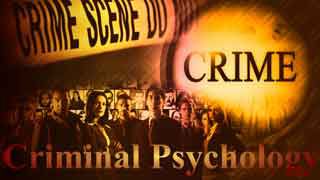Understanding Juvenile Delinquency: Causes, Effects, and Solutions
Juvenile delinquency, defined as illegal actions committed by minors,
presents a multifaceted challenge that affects societies worldwide. Ranging from
minor offenses to serious crimes, juvenile delinquency requires a comprehensive
understanding of its causes, effects, and viable solutions.
In conclusion, juvenile delinquency is a complex social issue that requires a comprehensive approach to address its root causes and mitigate its impact on individuals, families, and communities. By implementing evidence-based interventions and fostering supportive environments, societies can work towards preventing youth involvement in crime and promoting positive outcomes for all young people.
Causes of Juvenile Delinquency
Juvenile delinquency stems from a combination of individual, familial, and societal factors:
- Family Dynamics: The family environment significantly influences a child's behavior. Factors such as parental neglect, abuse, substance misuse, and inadequate supervision can contribute to delinquent behavior.
- Peer Influence: Adolescents often seek validation from their peers and may succumb to pressure to engage in delinquent activities to gain acceptance or fit in with a particular group.
- Socioeconomic Factors: Poverty, lack of access to education and employment opportunities, and residing in disadvantaged neighborhoods are correlated with higher rates of juvenile delinquency. Economic hardships may drive youth towards criminal activities as a means of survival or to attain social status.
- Substance Abuse: Substance abuse, including alcohol and drug use, is prevalent among juvenile delinquents. Drug-seeking behavior can lead to various criminal acts, including possession, distribution, or theft to support addiction.
- Mental Health Issues: Undiagnosed or untreated mental health disorders, such as conduct disorder, ADHD, or depression, can contribute to delinquent behavior. Without proper intervention, these underlying issues can exacerbate criminal tendencies.
- Community Factors: Neighborhood characteristics, such as high crime rates, limited resources, and social disorganization, influence juvenile delinquency. Communities lacking social cohesion and support systems are more susceptible to youth involvement in criminal activities.
Effects of Juvenile Delinquency
The repercussions of juvenile delinquency extend beyond the individual offender and impact society at large:
- Victimization: Juvenile offenders are often victims themselves, trapped in cycles of violence and exploitation. Involvement in criminal activities increases their vulnerability to physical harm, sexual abuse, and exploitation by adult criminals.
- Educational Disruption: Delinquent behavior disrupts a young person's education, leading to truancy, suspension, or expulsion from school. Educational setbacks diminish future prospects and increase the likelihood of continued involvement in criminal activities.
- Long-term Legal Consequences: Juvenile records can hinder individuals' ability to secure employment, housing, and educational opportunities in the future. Repeat offenses may result in harsher penalties and eventual incarceration, perpetuating a cycle of disadvantage.
- Community Impact: High rates of juvenile delinquency strain community resources and contribute to the deterioration of neighborhoods. Fear of crime can undermine community cohesion and economic development, perpetuating a cycle of social disintegration.
- Cost to Society: The economic costs associated with juvenile delinquency are substantial, encompassing expenses related to law enforcement, juvenile justice system involvement, victim compensation, and lost productivity. Addressing juvenile delinquency requires significant investment in prevention, intervention, and rehabilitation efforts.
Addressing Juvenile Delinquency: Solutions and Interventions
Effectively combating juvenile delinquency necessitates a holistic approach that encompasses prevention, intervention, and rehabilitation strategies:
- Early Intervention Programs: Identifying at-risk youth and providing early intervention services can mitigate the factors contributing to delinquent behavior. Programs such as mentoring, family counseling, and after-school activities offer support and guidance to vulnerable youth.
- Community Engagement: Building strong communities with access to social services, recreational activities, and positive role models can create a protective environment for young people. Community-based organizations and grassroots initiatives play a vital role in fostering resilience and promoting prosocial behavior.
- Education and Skill Development: Investing in education and skill development programs equips youth with the tools they need to succeed academically and professionally. Vocational training, job readiness programs, and alternative education options provide pathways to success for at-risk youth.
- Restorative Justice Practices: Emphasizing restorative justice principles encourages accountability, empathy, and reconciliation. Restorative justice approaches involve victims, offenders, and community members in the resolution of conflicts, focusing on repairing harm and restoring relationships.
- Access to Mental Health Services: Increasing access to mental health services and addressing underlying psychological issues are critical components of juvenile delinquency prevention and intervention efforts. Early identification and treatment of mental health disorders can prevent escalation into criminal behavior.
- Policy Reforms: Advocating for policy reforms that prioritize prevention, diversion, and rehabilitation over punitive measures can lead to more effective juvenile justice systems. Reforms such as raising the age of juvenile court jurisdiction, promoting alternatives to incarceration, and reducing disparities in sentencing are essential for ensuring fair and equitable treatment of youth offenders.
In conclusion, juvenile delinquency is a complex social issue that requires a comprehensive approach to address its root causes and mitigate its impact on individuals, families, and communities. By implementing evidence-based interventions and fostering supportive environments, societies can work towards preventing youth involvement in crime and promoting positive outcomes for all young people.
Law Article in India
Legal Question & Answers
Lawyers in India - Search By City
LawArticles
How To File For Mutual Divorce In Delhi

How To File For Mutual Divorce In Delhi Mutual Consent Divorce is the Simplest Way to Obtain a D...
Increased Age For Girls Marriage

It is hoped that the Prohibition of Child Marriage (Amendment) Bill, 2021, which intends to inc...
Facade of Social Media

One may very easily get absorbed in the lives of others as one scrolls through a Facebook news ...
Section 482 CrPc - Quashing Of FIR: Guid...

The Inherent power under Section 482 in The Code Of Criminal Procedure, 1973 (37th Chapter of t...
The Uniform Civil Code (UCC) in India: A...

The Uniform Civil Code (UCC) is a concept that proposes the unification of personal laws across...
Role Of Artificial Intelligence In Legal...

Artificial intelligence (AI) is revolutionizing various sectors of the economy, and the legal i...








Please Drop Your Comments